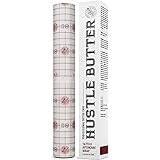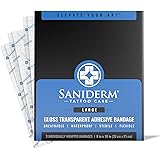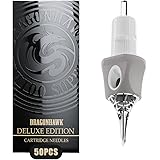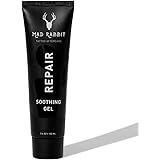Mastering Essential Hand Lettering Styles for Impactful Designs
Developing proficiency in various hand lettering styles is crucial. It allows for diverse artistic expression. Each style conveys a distinct mood. Your choice of lettering dictates the project’s overall feel. Let’s delve deeper into these essential styles. We will discuss their nuances and applications.
The Simplicity of Monoline Lettering
Monoline lettering is often your starting point. It mirrors your natural handwriting. However, a key difference exists. You aim for enhanced neatness and legibility. Consistency in line weight defines this style. It is the most accessible technique for beginners. Yet, it remains a favorite for seasoned pros.
Monoline is incredibly versatile. Imagine crafting a minimalist wedding invitation. Its clean lines convey modern elegance. This style shines in situations requiring clarity. It forms an excellent base for further embellishments. Many artists use it for quick notes. Others employ it for detailed compositions.
Despite its simplicity, monoline demands control. Focus on uniform stroke pressure. This ensures an even thickness throughout. Practicing basic strokes builds muscle memory. You can use any writing tool. A simple ballpoint pen works. A fine-liner delivers precise results. Try varying your hand pressure for subtle effects.
Building Foundations with Block Letters
Block letters are a fundamental component of hand lettering. They are bold and impactful. Their geometric structure offers great design potential. This style creates a strong visual presence. It is perfect for headlines or titles. The video highlights basic block forms. However, their true versatility extends much further.
You begin by sketching simple letter outlines. Next, you fill these outlines. This creates solid, defined shapes. Consider varying the letter widths. This adds dynamic visual interest. Block letters can be highly uniform. Conversely, they can showcase playful inconsistencies.
In contrast to plain blocks, add design elements. Introduce “feet” or serifs. These small extensions add character. They can be subtle triangles. They can also be bold rectangles. Imagine block letters on a vintage poster. Serifs instantly evoke that classic feel. Alternatively, doodle inside the letters. This creates unique patterns or textures. This technique makes your work truly distinctive.
Explore different block letter weights. A thin block letter feels modern. A heavy, chunky block letter commands attention. You can stack them vertically. You can arrange them horizontally. Experiment with different perspectives. This adds another layer of sophistication to your block lettering work.
The Playful Charm of Bubble Letters
Bubble letters exude fun and approachability. They are the curvy cousins of block letters. Their rounded forms create a soft aesthetic. This style is less formal by nature. It is perfect for lighthearted projects. Think of children’s book titles. Or casual birthday cards. Bubble letters instantly brighten a design.
Constructing bubble letters involves rounded outlines. The key is smooth, continuous curves. Avoid sharp angles for true bubble effect. You can vary the “puffiness” of each letter. Some might be tightly rounded. Others could be more elongated. This creates diverse visual textures. Imagine a vibrant party invitation. Bubble letters perfectly set that festive tone.
Many artists add actual “bubbles” around the letters. This reinforces the playful theme. Experiment with gradient fills. Try bright, contrasting colors. Outlining bubble letters with a darker shade makes them pop. You can also create internal patterns. Polka dots or stripes work well. This style invites boundless creativity. It encourages whimsical exploration.
The Elegance and Formality of Serif Lettering
Serif lettering carries an air of tradition. It is often seen as more formal. You encounter serifs in classic invitations. They are prevalent in book typography. The defining feature is the “feet” or small strokes. These extend from the main letter strokes. Serifs add a touch of sophistication. They enhance readability in long texts.
The core construction begins like monoline. However, a critical distinction exists. Downstrokes are intentionally thickened. This creates visual weight and contrast. Consider the letter ‘T’. Its vertical stem (downstroke) would be thicker. Its crossbar would remain thinner. This interplay of thick and thin is vital. It lends serifs their distinctive appeal.
Beyond basic triangular feet, many serif styles exist. Slab serifs are thick and block-like. They often appear industrial or robust. Bracketed serifs curve smoothly into the main stroke. Unbracketed serifs join abruptly. Hairline serifs are exceedingly thin. Imagine recreating an old newspaper headline. A bold slab serif would be ideal. Yet, a delicate bracketed serif suits a formal certificate.
Exploring different serif classifications is enriching. Old Style serifs feature moderate contrast. They have a diagonal stress. Transitional serifs offer more contrast. They possess a more vertical stress. Modern serifs showcase extreme contrast. Their serifs are often unbracketed and thin. Each category evokes a different historical period. Your choice profoundly impacts your design’s character.
Demystifying Calligraphy and Faux Calligraphy
True calligraphy is a refined art form. It demands specialized tools. It requires extensive practice. Calligraphy pens create natural thick and thin lines. These pens respond to pressure and angle. Learning traditional scripts takes dedication. However, you don’t need years of practice to achieve a similar aesthetic.
Faux calligraphy offers an accessible alternative. It mimics the calligraphic look. You achieve this using any basic pen. First, write your word in cursive. Focus on smooth, flowing connections. Next, identify all the downstrokes. These are any lines where your pen moves downwards. Thicken these specific strokes. Draw a parallel line next to them. Then, fill the created gap. This simple technique transforms ordinary cursive. It creates a beautiful, elegant appearance.
Faux calligraphy provides immense control. You dictate where thickness occurs. This makes it highly versatile. Imagine an elegant card. You can create the effect of a dip pen. Yet, you use only a standard marker. You can also add design elements. Within the thickened areas, try patterns. Small dots or lines enhance visual texture. This method is forgiving. It builds confidence in aspiring calligraphers.
Adding Dimension: The Power of 3D Lettering
3D lettering creates depth and realism. It literally makes your words pop off the page. This technique is most effective. It works best with block or bubble letters. Their solid forms lend themselves well to dimension. Understanding light sources is paramount. This dictates where your shadows fall.
Choose a hypothetical light source. Is it from the top left? Or perhaps the bottom right? The opposite side of your letter will show depth. Draw parallel lines from key points. These lines extend into your chosen direction. Connect these lines to form the “side” of your letter. This creates the illusion of a third dimension. Imagine a bold headline. 3D rendering adds significant visual weight. It makes the text truly stand out.
Shading is critical for realistic 3D effects. The surfaces furthest from the light source will be darkest. The closest surfaces will be lightest. A subtle gradient adds to the illusion of depth. You can also incorporate drop shadows. These cast shadows behind the letters. They further enhance the dimensional effect. Experiment with different shadow colors. A cool gray shadow recedes visually. A warm brown shadow adds a soft touch.
Refining Your Craft: Essential Lettering Tips
Achieving polished lettering involves more than just styles. It requires attention to detail. Several techniques elevate your work. They bridge the gap between amateur and professional. These practices ensure high-quality outcomes. Incorporate them into your routine.
Cleaning Up Your Edges
Hand lettering is rarely perfect initially. Edges can appear rough. Connections might seem uneven. This is entirely normal. The key is knowing how to refine them. After the initial sketch, go back. Use a fine eraser. Sharpen blurred lines. Use a white gel pen. Cover small imperfections. This meticulous cleanup process is crucial. It results in crisp, professional-looking lines. Imagine a meticulously crafted logo. Its clean edges convey precision. Your lettering can achieve this too.
Varying Letter Sizes for Personality
Consistent letter sizing is often a goal. However, controlled variation adds character. Different letter heights and widths create dynamism. This technique imbues your work with personality. It adds a quirky, charming touch. A tall ‘H’ next to a short ‘o’ can be expressive. It creates an engaging visual rhythm. This is particularly effective in playful designs. Imagine a vibrant greeting card. Varied sizing makes the message feel unique. It feels less rigid, more human. This controlled inconsistency is an artistic choice. It breaks monotony. It attracts the viewer’s eye.
Thickening Monoline Downstrokes
Even monoline lettering can be enhanced. You can add visual interest. Thicken the downstrokes, just like serifs. This simple alteration transforms the style. It adds weight and impact. The monoline structure remains evident. Yet, a subtle elegance emerges. This technique is easy to implement. It offers a quick way to vary your designs. Imagine a simple quote. Thickened downstrokes add emphasis. They make certain words stand out. This small detail creates a noticeable difference. It elevates the overall aesthetic.











